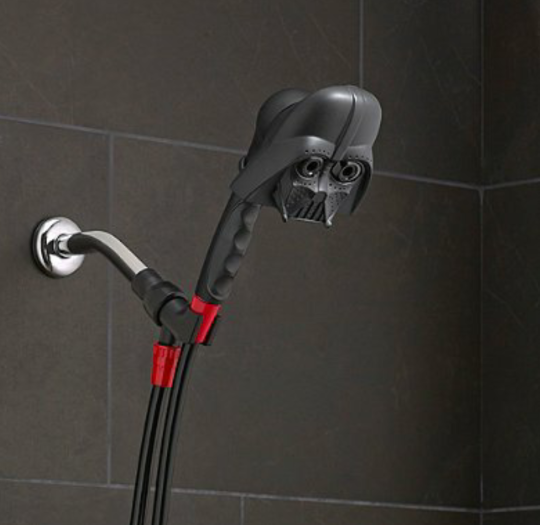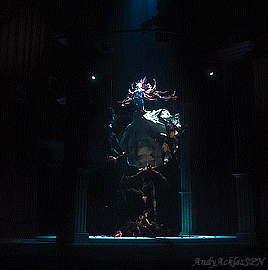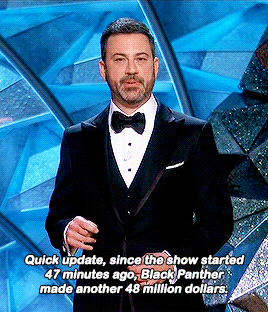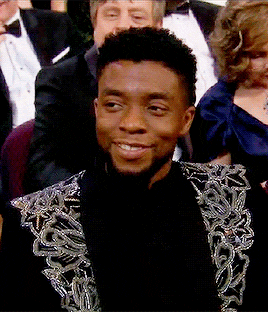Photo










Horizon to Horizon Milky Way (photoset: by inefekt69)
Follow on Flickr / Instagram
Please don’t delete the link to the photographers/artists, thanks!
9K notes
·
View notes
Photo


because nothing starts ur day off right like darth vader crying heavily over ur naked body
555K notes
·
View notes
Photo









one gifset per favorite character ♡ sana bakkoush “War doesn’t start with violence, it starts with misunderstanding and prejudice. If you say you’re in favor of a world full of peace, you have to try to understand why others think and act the way they do. You have to accept that not everyone sees the world the way you do. You can’t just believe that everyone has the answers to what is right and wrong.”
557 notes
·
View notes
Photo










« The Evil Within 2 – E3 Extended Gameplay Trailer »
1K notes
·
View notes
Photo










« The Evil Within 2 | The Twisted, Deadly Photographer »
2K notes
·
View notes
Text
The Alignments
Lawful Good: it’s a person who acts as is expected to act by laws. They help others, tell the truth, speak against injustice of the society, hate to see unpunished guilty. They are characterized by compasion and honor, want to improve the society even if something must be sacrificed for the good and order. According to them, society must be well-organized and efficient to garantee a better life for people, and this goes throught laws. Lawful good character are: Superman (DC comics), Luke Skywalker (Star Wars), Hermione Grenger (Harry Potter), Eddard Stark (Game of Thrones).
Lawful Neutral: it is a person who acts as law, tradition, or a personal code that leads their life. They see regulation as important, taking a middle area between good and evil. Good and evil are unburn, it’s law and order that give meaning to the world. They are respectful of peers and leaders, and like the stability in life. Lawful neutral can be descrived as resposanbile, loyal, methodical, and precise. Lawful neutral character are: Percy Weasley (Harry Potter), Judge Dredd (DC comics).
Lawful Evil: it’s a evil villain that methodically does his/her interest in limits of the law’s code: they use society and its laws to benefit themselves, shortly. They care about tradition, loyalty and order, but reject freedom, dignity or compassion. This depends on a an hand from their nature, on the other hand from what can protect themselves from those who oppose to them. They’re often called “diabolic” and rapresent methodical, intentional, and frequent successful evil. Lawful evil are cruel, malevolent, hostile, tyrannical, commanding. Lawful evil character are: Darth Vader (Star Wars), Dolores Umbridge (Harry Potter), Magneto (Marvel Comics).
Neutral Good: it’s a person who does the best a good person can do. They do what is good without minding if goes against or for the order. Laws and order are seen as tools for bringing happiness, peace to all individuals or creatures. They value personal freedom and adherence to laws, and there must be a balance between them: life and rights of all must be respected and equal. Neutral good are usually independent, but don’t mind being part of/cooperate with a group or make friends. They can be described as helpful, kind, respectful, firendly, altruistic. Neutral good character are: Harry Potter, Gandalf the Grey (Lord of the Rings), Spiderman (Marvel Comics).
True Neutral: it’s a person that doesn’t stay in one way or other when it comes to law vs chaos or good vs evil. They always prefer to stay in a neutral position, without extremity in things, they act naturally, without prejudice or impulsivity. For them everything exist as a part of the whole, with nothinh predominant or out of balance. True neutral are concerned with their well-being: they will act right with their friends,but without maliciously behavior with those who hurt them. True neutral are distant, diplomatic, fair and indifferent. True neutral characters are: Horace Slughorn (Harry potter), Tom Bombabil (Lord of the Rings).
Neutral Evil : it’s a villan that does whatever and/he can get away with. They have no mercy or emotion if they kill or hurt someone, as long as it gives profit or convenience. They commit evil for their own sake and advance others without regard for others. They search glory, position, wealth and anything that makes their life more comfortable. Neutral evil are unkind, unemotional, hateful, immoral, destructive. Neutral evil character are: Emperor Palpatine (Star Wars), Saruman (Lord of the Rings), Lex Luthor (DC comics).
Chaotic Good: it’s a person according to him/her will, with little regard in what others expect from him/her. They make their own way, but they are kind and friendly; follow their moral and value, that might not be that of society. Fot them, indipendence and freedom are important to life and happiness of everyone. Laws, order, social forms,etc are wrong because limit for self-recognition. They are good people, but can be selfish and greedy. Respite this, chaotic good will not tread to others to make their way, because others should pursuit their will as well. Chaotic good character are: Han Solo (Star Wars), Batman(Dc Comics), Robin Hood.
Chaotic Neutral: it’s a character that follows his will and individuality. They value their own freedom but doesn’t strive to protect others freedom. They avoid authority, resent restrinctions and challanges tradition. Good and evil are balanced arms: no one prevals or prefered. They indulge in everything, are predicable and indulgent follow their interest. Chaotic neutral are independent, confusing, anarchic, self-centred, individualistic. Chaotic Neutral characters are: Captain Jack Sparrow (Pirates of the Caribbean), Q (Star Trek), and Conan the Barbarian, Deadpool (Marvel Comics).
Chaotic Evil: it’s a villan that does whatever his/her greed, hatred, or lust for destruction. They have hot-temper, violence and are brutal. They combine self-interest and pure freedom; it rapresents the destruction of beauty, life and order of things. Chaotic evil likes to corrupt innocent and virtuous, and treats people like tools and manipulates them for his/her pleasure. Choatic evil are violent, uncaring, unfeeling, selfish, heartless. Chaotic evil character are: Gollum (Lord of the Rings), Joker (DC Comics) Lord Voldemort (Harry Potter).
3K notes
·
View notes
Text
Enneagram: How to get along with the types.
Type 1
- Be responsible for yourself, so I don’t have to do that for you, too. - I’m hard on myself. Assure me that I’m good, just the way I am. - Tell me that you appreciate my advices. - Be fair, and attentive, like I am. - Apologize when you are wrong. This helps me forgive. - Help me loosen up a bit, and teach me how to laugh at myself. But please, listen to my concerns first.
(Most common type among ISTJs, ESTJs, and INTJs)
Type 2
- Tell me you appreciate me. Be specific about why. - Share your joy with me. - Do care about my problem, even if I’m busy with yours. - Let me know that I’m important and special to you. - Please be gentle, even if you have to criticize me. - In intimate relationships; assure me that you’re still interested in me. - Remind me that you love me. - Tell me I’m attractive, and you really like when people see us together.
(Most common type among ISFJs, ESFJs, ESFPs, INFJs, and ENFJs)
Type 3
- Leave me alone when I work. - Please give me honest, but not critical feedback. - Help me to organize, and to keep my environment neat. - Don’t burden me with negative emotions. - Tell me that you like being with me. - Tell me that you’re proud of me and my achievements.
(Most common type among ESTJs, ENTJs, and ENFJs)
Type 4
- Give me compliments often. They mean a lot. - Be a supportive friend, or partner. Help me to love others and to appreciate myself. - Please keep the power of my intuition, and foresight in respect. - Though I don’t always want people to cheer me up from my melancholy, sometimes you still have to bring back the light to my inner world. - DON’T tell me, that I’m too sensitive, or I overreact something!
(Most common type among ISFPs, INFJs, and INFPs)
Type 5
- Please be independent, not a puppy. - Talk shortly, and straightforwardly. - I need to be alone to think. - Remember, if I appear to be distant, or arrogant, that’s because I feel uncomfortable. - Show me that you’re happy to see me, but don’t ever overact because that makes me doubt your honesty. - If I have to repeat something I said, and I become irritated, that’s because it was hard to say for the first time even. - Help me to avoid big parties, loud people, overheated emotions, and the violation of my privacy.
(Most common type among ISTPs, INTJs, and INTPs)
Type 6
- Be straightforward and honest with me. - Pay attention to me. - Please don’t condemn me for my worry. - Let’s solve our problems together. - Assure me that everything’s OK between us. - Laugh, and joke around with me. - Lead me gently to new experiences. - Don’t overreact when I overreact something.
(Most common type among ISTJs, ESTJs, ISFJs, and ESFJs)
Type 7
- Give me company, kindness, and freedom. - Have stimulating conversations, and laugh with me. - Appreciate my ideas, and listen to my stories. - Don’t try to change me. Accept me for who I am. - Be independent. I don’t like babysitting others. - Please don’t tell me what to do.
(Most common type among ESTPs, ENTPs, ESFPs, and ENFPs)
Type 8
- Stand up for yourself… and for me. - Be confident, strong, and straightforward. - Don’t talk behind my back and don’t abuse my trust. - Dare to be vulnerable, and share your feelings with me. Notice, and admit that I have a delicate side, too. - Give me space to be alone. - Admit, and appreciate the things I do for you, but don’t try to dazzle me. - I often talk passionately. Please don’t take it personally. - When I rage, I break things, or I shout. Remember, this is how I work.
(Most common type among ESTPs, ENTJs, and ENTPs)
Type 9
- It’s not what you say, it’s the way you say it. I’m sensitive to pressure and expectations. - I like being quiet and to serve, but don’t take advantage of me. - Don’t interrupt me when I’m talking, not even when I digress a little. - Give me enough time for decisions, and tasks. But you can push me gently. - Ask, if something’s not clear. - Please tell me, if you like me. It won’t go to my head. - Hug me, and show me your emotions physically. This helps me to open up. - I like a good conversation, but not an argument. - Let me know, if I did or said something right. - Laugh with me, and share your happiness with me.
(Most common type among ISTPs, INTPs, ISFPs and INFPs)
7K notes
·
View notes
Text
Enneagram Childhood Wounds
Type 1: These children felt heavily criticized, punished, or not good enough. Household rules may have felt inconsistent. As such they became obsessed with being good/not making mistakes to avoid condemnation. The principle message was: “You must always be better than you are.”
Type 2: These children felt loved only if they were helping or pleasing others, their personal needs felt selfish. As a result they closed off their own needs and feelings and tuned into those of others. Love became defined as giving to others - though the love often didn’t feel received or reciprocated.
Type 3: To the heart - These children felt rewarded only for what they did and how well they did it. their feelings were discounted and ignored, only their performance and what was expected of them mattered. This harmed their ability to love themselves and others. Admiration replaced real love.
Type 4: These children felt abandoned by one or both caretakers. They felt alone, cut off from the source of love for reasons they couldn’t understand. They were not “seen” or mirrored, and felt different from their parents. As a result, they turned inward to their feelings and imagination to cope in isolation.
Type 5: These children received no meaningful interaction, emotion, or affection from caretakers. Or, the child had intrusive, over-controlling parent(s) and felt exposed and defenseless in the face of this intrusion. As a result, they built walls around themselves and retreated to the mental realm.
Type 6: To the trusting nature. These children were raised in an unpredictable situation with no safe place to go. They lost faith they would ever be protected. As such, they turned to their own inner defense of doubting, disbelieving reality and rejecting their own instincts/inner guidance.
Type 7: These children were deprived of nurturing, or it was too-soon removed. They handled this lack by searching for distractions to minimize/repress fear and pain. They decided to focus on positive options and rely on themselves to fulfill their desires and gain a sense of nurturance.
Type 8: These children often grew up in an unsafe environment (emotionally and/or physically) and had to mature way too soon. They didn’t feel safe to show any vulnerability, and may have felt controlled. Weakness was used against them, so they focused only on building their strength.
Type 9: To the gut, the core of being. These children were overlooked or neglected and felt unimportant or “lost.” They were ignored/attacked for having needs or expressing themselves (especially anger) and decided to keep a low profile and instead focus on the needs/experience of others.
(credit to Elan BenAmi, MA, and Rev. Lori Ohlson, MA, LPC)
5K notes
·
View notes




































